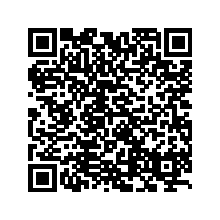Discovery at Carlson·30 Critical Reviews and the Power of the Crowd

JOEL WALDFOGEL
Associate Dean of MBA and MS Programs
Frederick R.Kappel Chair in Applied Economics
Biography
Joel Waldfogel was previously the Ehrenkranz Family Professor of Business and Public Policy at the University of Pennsylvania's Wharton School, where he and had served as department chair and associate vice dean. Prior to Wharton, Waldfogel was an associate professor of economics at Yale University.
His main research interests are industrial organization and law and economics, and he has conducted empirical studies of price advertising, media markets, the operation of differentiated product markets, and issues related to digital products, including piracy, pricing, and revenue sharing. He has published more than 50 articles in scholarly outlets, including the American Economic Review, the Journal of Political Economy, and the RAND Journal of Economics. He also has published several books, including Digital Renaissance (Princeton University Press, 2018), The Tyranny of the Market: Why You Can't Always Get What You Want (Harvard University Press, 2007) and Scroogenomics: Why You Shouldn't Buy Presents for the Holidays (Princeton University Press, 2009). He has also written for Slate.
Waldfogel received a BA in economics from Brandeis University and a PhD in economics from Stanford University. He grew up in South Minneapolis, graduating from Washburn High School.
Critical Reviews and the Power of the Crowd
The numbers are staggering. Today, Amazon has close to 60 million books for sale. Spotify lets users choose from a catalog of 70 million tracks. And Hulu, Netflix, and Amazon offer a combined total of nearly 90,000 movies and TV shows.

In short, we’re drowning in content these days. And while that seemingly endless number of choices can feel liberating—it also presents a challenge. With so many options at your disposal, how can you decide on what to watch, listen to, or read? Associate Dean Joel Waldfogel used the book industry to explore that question. More specifically, he looked at how pre-purchase information affects consumer book-buying.
As Waldfogel explains, “pre-purchase information” refers to the ratings and reviews that help you decide what books to buy. Well before Amazon launched its online bookstore, many consumers looked to professional critics for guidance on what to read, with the New York Times Book Review as the widely accepted standard. And while the Times book reviews and recommendations remain a popular cultural mainstay, its reviewers simply can’t keep pace with the ever-expanding library of available titles. “In that sense, digitization has created a problem,” says Waldfogel. “But it has also created a solution in the form of Amazon’s crowd-based star ratings system, which helps book buyers make informed decisions.”
“The New York Times raises awareness by alerting people to new books they otherwise might not have known about,” he says. “At the same time, Amazon bookshoppers tend to already know about the book or books they’re looking for. The star ratings give them a quality assessment—the ratings can help them decide whether or not to buy it.”
Waldfogel adds that professional and crowd-based reviews operate in a fundamentally different but often complementary fashion. “The New York Times raises awareness by alerting people to new books they otherwise might not have known about,” he says. “At the same time, Amazon book-shoppers tend to already know about the book or books they’re looking for. The star ratings give them a quality assessment—the ratings can help them decide whether or not to buy it.”
That understanding helped lead him to a second line of inquiry: Do professional reviews and crowd ratings make a tangible impact on demand? And if so, how big is that impact? The results were clear for the New York Times. Waldfogel found that a book’s sales climb by at least 55 percent in the five days after a review and by 2.8 percent over the course of a year. In contrast, Amazon doesn’t reveal sales figures for individual books, but Waldfogel’s analysis determined that the elasticity of sales with respect to an Amazon star is about 0.75. His statistical models also found that the aggregate effect of Amazon star ratings is approximately 10 times larger than the effect of New York Times reviews. That’s not necessarily surprising, given that the millions of books with star ratings on Amazon dwarfs the 2,000 or so titles the Times reviews each year.
“There are a couple of takeaways here,” Waldfogel explains. “One is that professional reviews remain relevant. People still look to them as a way to find new books—the sales figures back that up. Another takeaway involves the power of crowdbased ratings. They function as a form of free advertising. And that can help some books—including self-published ones—find success. What’s more, the authors often can find that success without traditional forms of intermediary help such as professional marketing, distribution, and the like.
“There’s a huge amount of content—music, books, and more—being developed outside of traditional channels,” he adds. “The vast majority of them won’t find a mass audience, but thanks to the democratizing effects of digitization, they now account for a substantial amount of overall sales.”

专业书评和大众打分
“《纽约时报》介绍的是读者不了解的新书。而在亚马逊,购书者对自己要找的书已经有所了解。星级评分是对图书质量的评估,帮助购书者决定是否购买。”
来看一组惊人的数字。目前,亚马逊在售的图书接近6000万种,Sportify的曲库达到7000万首,Hulu网、网飞、亚马逊提供的电影、电视节目总计约9万部。
今日的我们已经被海量的内容淹没。看似无穷无尽的选择,不仅给人们带来了自由,也提出了挑战。面对海量内容,你如何作出选择?你会看什么、听什么、阅读什么?卡尔森学院副院长Joel Waldfogel从图书行业切入,试图解答这一问题。他研究了购买前信息对消费者购书行为的影响。
“购买前信息”是指影响消费者决策的打分和评论。在亚马逊推出图书线上销售服务之前,许多消费者根据专业书评来购书,其中《纽约时报》的书评栏目最受读者认可。虽然该栏目现在依然是文化领域的风向标,但由于新书发行量太大,评论员已经无法跟上其步伐。“数字化造成了一个新问题,也带来了解决方案。亚马逊的大众打分系统,帮助购书者作出明智的决定。”
Waldfogel补充说,专业书评和大众评分的本质不同,但形成互补关系。“《纽约时报》介绍的是读者不了解的新书。而在亚马逊,购书者对自己要找的书已经有所了解。星级评分是对图书质量的评估,帮助购书者决定是否购买。”
基于上述理解,他提出了第二个调查问题:专业书评和大众评分是否会对消费者的需求产生切实影响?如果是,其影响有多大?对于《纽约时报》,这个问题的答案是明确的。Waldfogel发现,《纽约时报》发表书评后的五日内,相关书籍的销量会攀升55%或更高,而一年内的增长约为2.8%。亚马逊不公布单本图书的销量,但Waldfogel通过分析确定,亚马逊书籍销量对星级评分的弹性约为0.75。数据分析还表明,亚马逊星级评分的总体效果比《纽约时报》书评高10倍。这个数字并不惊人,因为《纽约时报》每年评论的书籍约为2,000种,而亚马逊星级打分覆盖了数百万种书籍。
Waldfogel表示,“这项研究带来了几个启示。首先,专业书评依然有价值。消费者依然会根据书评来发现新书,销售数据也证明了这一点。其次,大众评分很有力量。它起到了免费广告的作用,能够帮助书籍获得成功,包括自费出版的图书。更重要的是,它给作家们提供了一条路径,不必依赖专业营销、发行等传统中介,也能获得成功。”
“目前,海量的内容诞生于传统渠道之外,包括音乐、书籍等。它们中的绝大多数无法触及大众。但是由于数字化带来的民主化效应,它们已经在整体销售中占据较大份额。”



